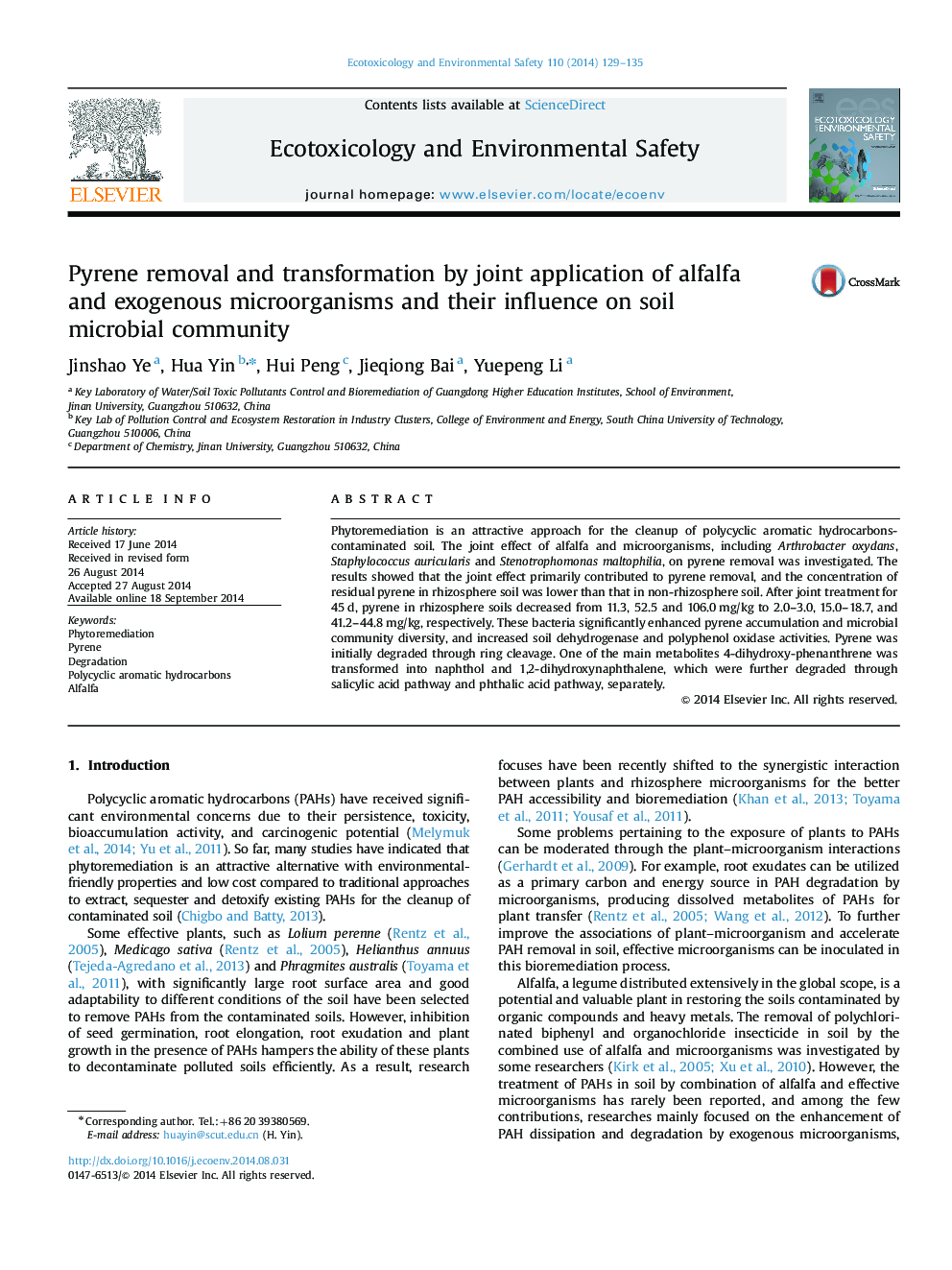| Article ID | Journal | Published Year | Pages | File Type |
|---|---|---|---|---|
| 4419922 | Ecotoxicology and Environmental Safety | 2014 | 7 Pages |
•Three bacterial strains significantly enhanced pyrene removal and uptake.•Strains increased soil enzymes activity, and enhanced soil microbial diversity.•Pyrene removal primarily relied on metabolism and joint effects of alfalfa-microbe.•Pyrene was degraded through ring cleavage, and phthalic acid and salicylic acid pathways.
Phytoremediation is an attractive approach for the cleanup of polycyclic aromatic hydrocarbons-contaminated soil. The joint effect of alfalfa and microorganisms, including Arthrobacter oxydans, Staphylococcus auricularis and Stenotrophomonas maltophilia, on pyrene removal was investigated. The results showed that the joint effect primarily contributed to pyrene removal, and the concentration of residual pyrene in rhizosphere soil was lower than that in non-rhizosphere soil. After joint treatment for 45 d, pyrene in rhizosphere soils decreased from 11.3, 52.5 and 106.0 mg/kg to 2.0–3.0, 15.0–18.7, and 41.2–44.8 mg/kg, respectively. These bacteria significantly enhanced pyrene accumulation and microbial community diversity, and increased soil dehydrogenase and polyphenol oxidase activities. Pyrene was initially degraded through ring cleavage. One of the main metabolites 4-dihydroxy-phenanthrene was transformed into naphthol and 1,2-dihydroxynaphthalene, which were further degraded through salicylic acid pathway and phthalic acid pathway, separately.
